When you’re trying to pull together the best dumbbell chest workout, it’s important to focus on a wide variety of factors. Yes, the weight you choose and the moves you try will influence your progression — but getting the grip and positioning correct can also influence how effectively you activate your muscles.
If you’re trying to progress quickly, it’s also worth buying some of the best adjustable dumbbells, as these will allow you to add weight and consistently challenge yourself. We spoke to Michael Detten, a doctor of physical therapy and NSCA-Certified Strength & Conditioning Specialist, to get more insight into chest-building workouts.
What muscles do dumbbell chest exercises strengthen?
The primary muscles in the chest are the pectoralis major and pectoralis minor. The pectoralis major is a thick fan-shaped muscle at the front of the chest and the pectoralis minor is a smaller, triangular shaped muscle sitting underneath this.
“The pectoralis major plays a significant role in shoulder stabilization” Detten told Live Science. “It can actually be divided into three major portions: the superior portion includes the clavicular head; the middle portion includes sternal insertion; and the inferior portion inserts into the fifth through eighth ribs.”

Michael Detten
Detten is the clinic director at Physical Therapy Central, Oaklahoma. He holds a PhD in physical therapy and is a certified sports physical therapist. A trained clinician with a strong background in strength and conditioning, Detten has extensive training with professional and amateur athletes from the MLB, NBA, NFL, NCAA and Crossfit.
Detten says that any dumbbell chest exercise will activate all three portions of the pectoralis major, but you can isolate or target specific portions by changing the incline or decline of the exercise or varying the width of your grip.
Mistakes to avoid
Detten noted that one of the most common mistakes he sees when people perform ‘pressing’ exercises is over-activation of the serratus anterior and anterior deltoid muscles, which are muscles underneath your armpit and at the front of your shoulder.
“When this happens, shoulder protraction takes over, which is an unstable and compromising position for the shoulder overall,” he warns. This means that you’re at a higher risk of injury.
To combat this, he suggests working in a position that draws the shoulder blades towards each other, keeping your elbows low and making sure your upper/ middle spine stays extended.
#1: Horizontal dumbbell chest press with a narrow grip
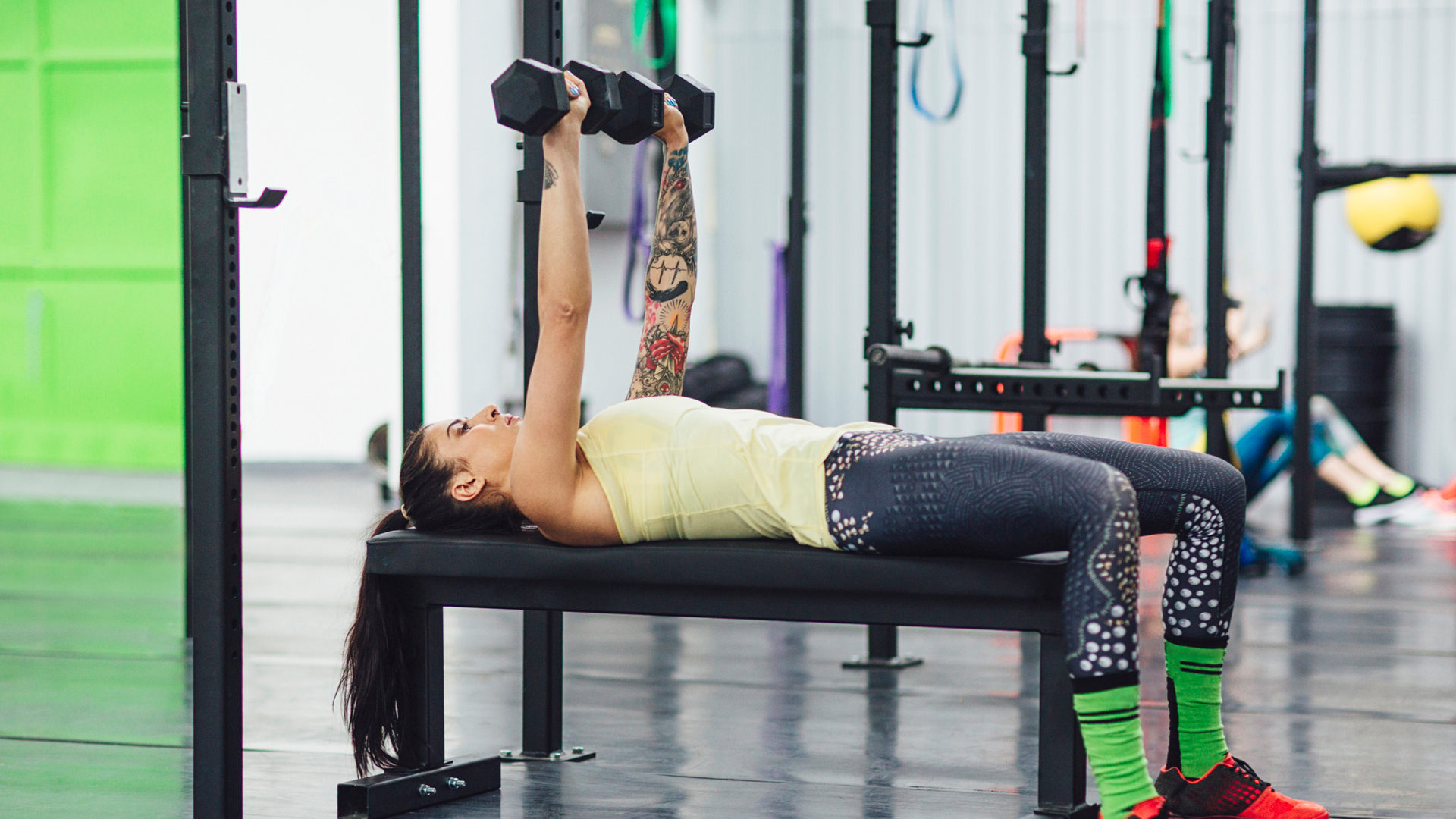
“Using a narrow grip with the horizontal dumbbell press will help activate the sternal heads [upper portion] of the pectoralis major as well as increasing activation of the triceps brachii,” says Detten.
Evidence also suggests that having a narrow grip will reduce the force through the acromioclavicular joint (at the shoulder cap) which can reduce the risk of injury, as suggested in a study published in the Clinical Journal of Sports Medicine (opens in new tab).
Here’s a breakdown of the exercise:
- Lie on your back on a weight bench with your knees bent to 90 degrees and feet flat on the floor.
- Grip the dumbbells so that your palms are facing your feet, and bring each one into chest press position such that your fist is hovering roughly over the armpit on that side. In this narrow grip version, your hands should close enough together that the inner sides of the dumbbells are nearly touching one another.
- Exhale as you press the dumbbell straight up into the air above your body.
- Inhale as you slowly lower them back down.
- Complete 8 to 12 reps.
#2: Horizontal dumbbell chest press with a medium/wide grip
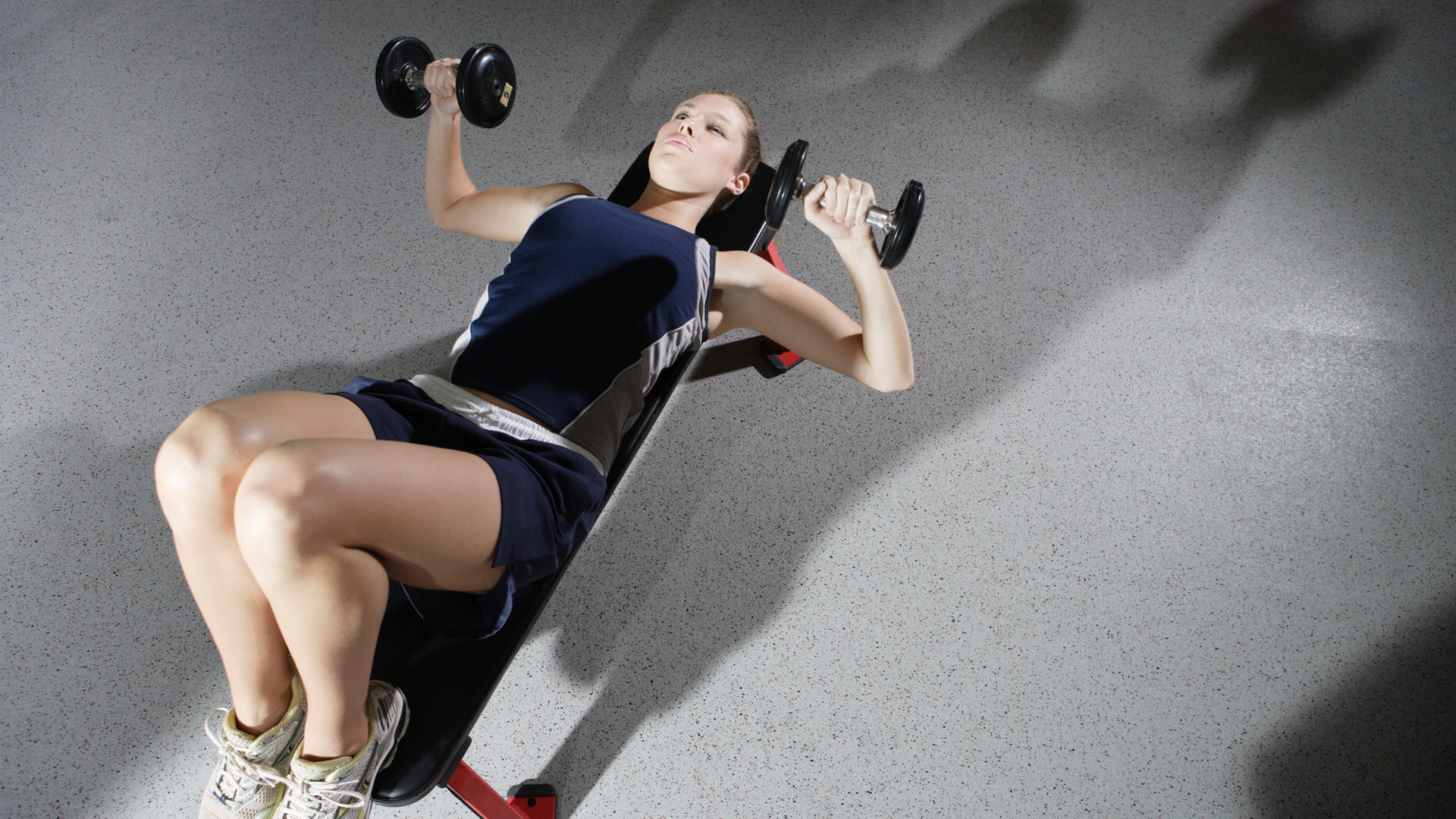
Detten says using a medium to wide grip with the horizontal dumbbell press will also induce activation of the sternal heads of the pectoralis major musculature. But doing this grip, rather than the above narrow variation, will activate the biceps rather than the triceps.
- Perform the same chest press motion as in the horizontal dumbbell chest press outlined above. But this time, your hands should stay shoulder-width or slightly further apart.
#3: Horizontal dumbbell chest fly
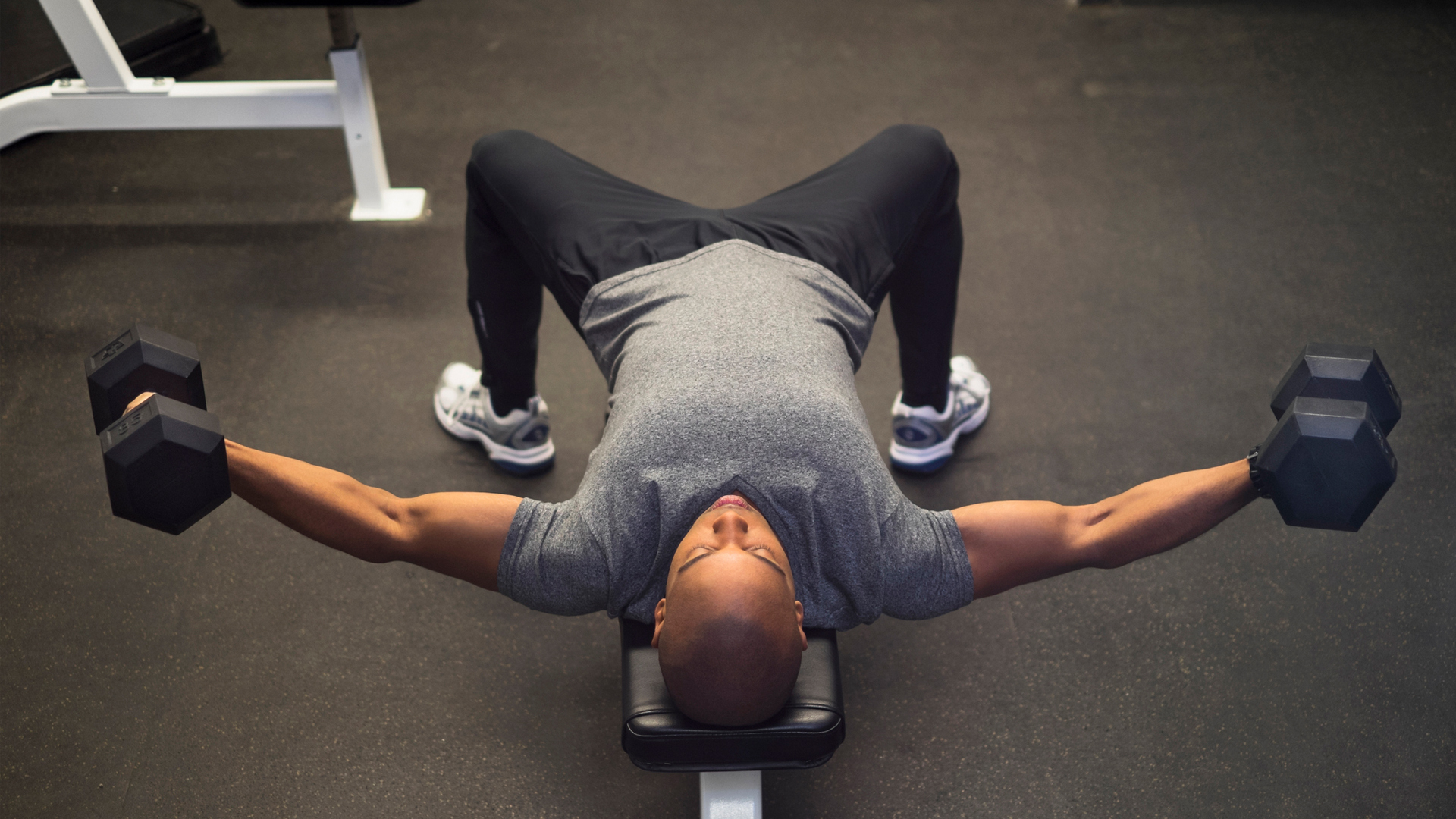
The horizontal dumbbell fly exercise is another great dumbbell chest exercise to activate the pectoralis major. But unlike the above, it will target the middle/ side portion of the chest along with your biceps, as Detten explains:
“This movement isolates the horizontal abduction musculature of the chest and shoulder and will also produce higher activation of the biceps brachii musculature, compared to the chest press.”
- Lie on your back on a weight bench with your knees bent to 90 degrees and feet flat on the floor.
- Grip the dumbbells so that your palms are facing one another, and extend each arm straight up over your chest.
- Exhale as slowly bring each dumbbell out to the side, maintaining a slight bend in your elbow, until your hands are about level with your body.
- Inhale as you return to the starting position.
- Complete 8 to 12 reps.
#4: Incline dumbbell chest press
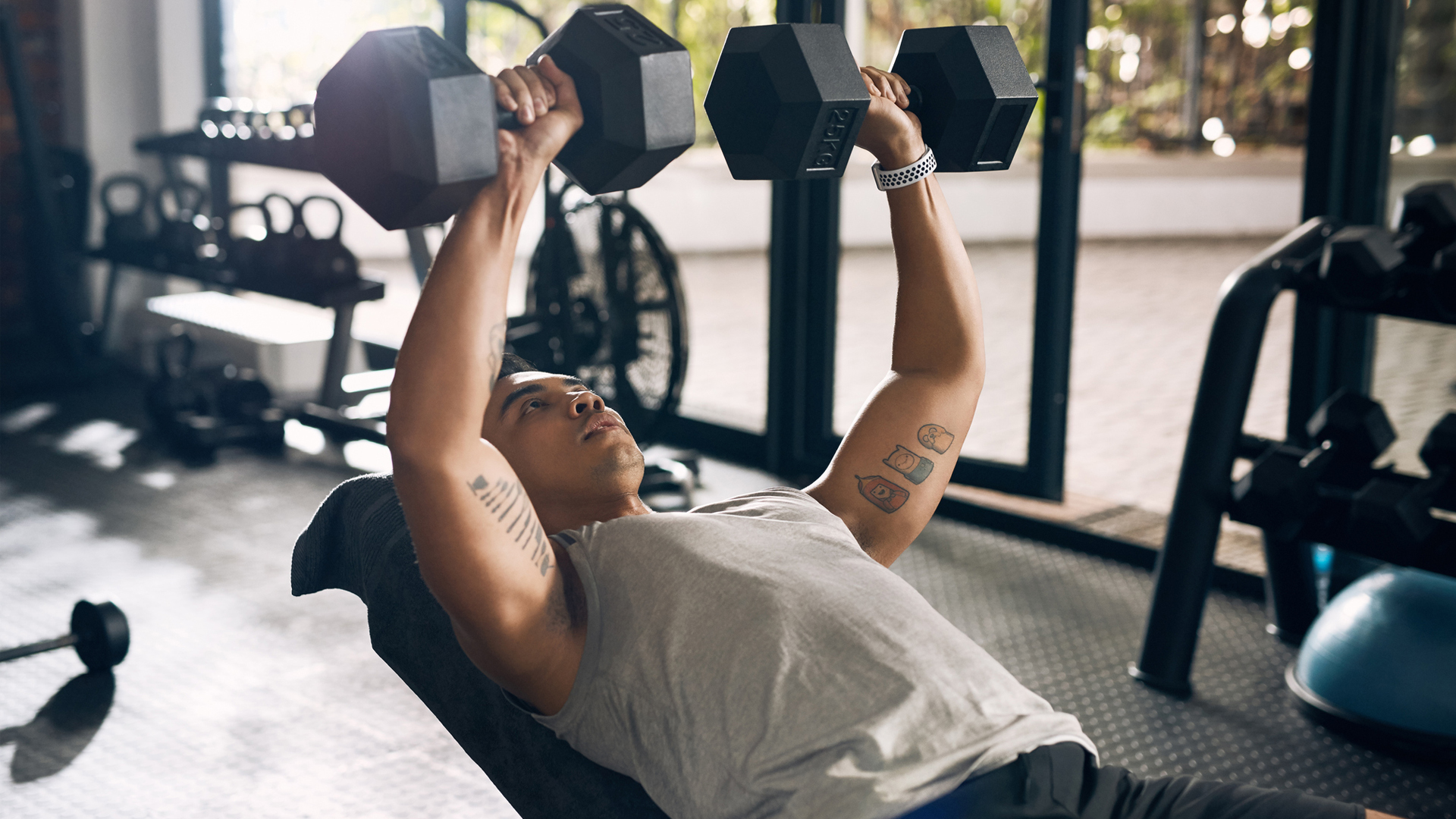
According to research published in the Journal of Strength and Conditioning Research (opens in new tab), when you perform a dumbbell chest press in an inclined position, you’ll get higher activation of the clavicular head of the pectoralis major. Here’s how to do it.
- Perform the same chest press exercises with a standard, shoulder-width grip, but incline the bench so that you’re about 30 degrees from the horizontal position.
#5: Incline dumbbell chest fly
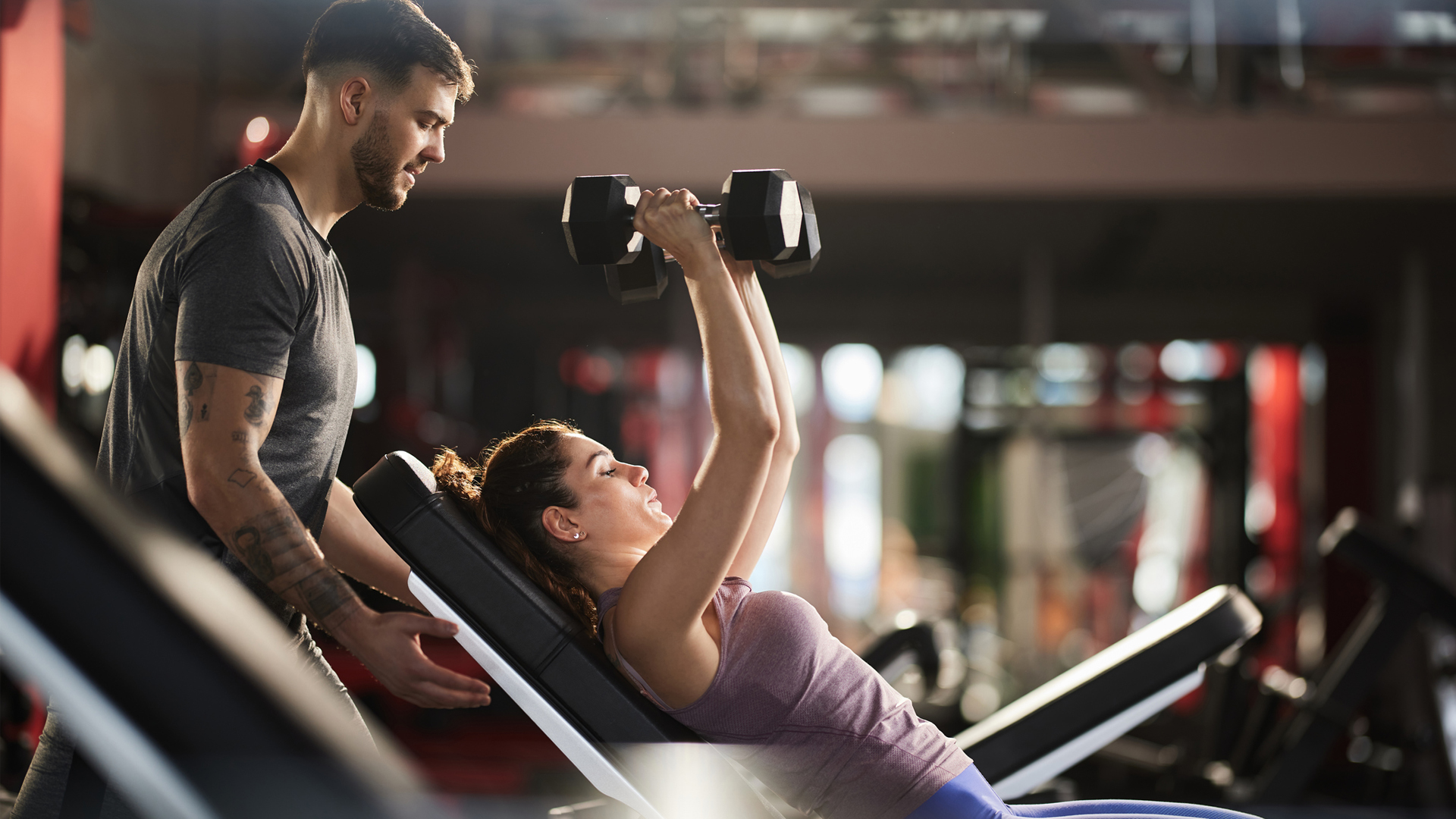
Detten says that as with the dumbbell chest press exercise, the inclined position with the chest fly exercise increases the reliance on the clavicular head of the pectoralis major muscle.
- Perform the same dumbbell chest fly exercises, but incline the bench so that you’re about 30 degrees up from the horizontal position.
#6: Dumbbell push-ups
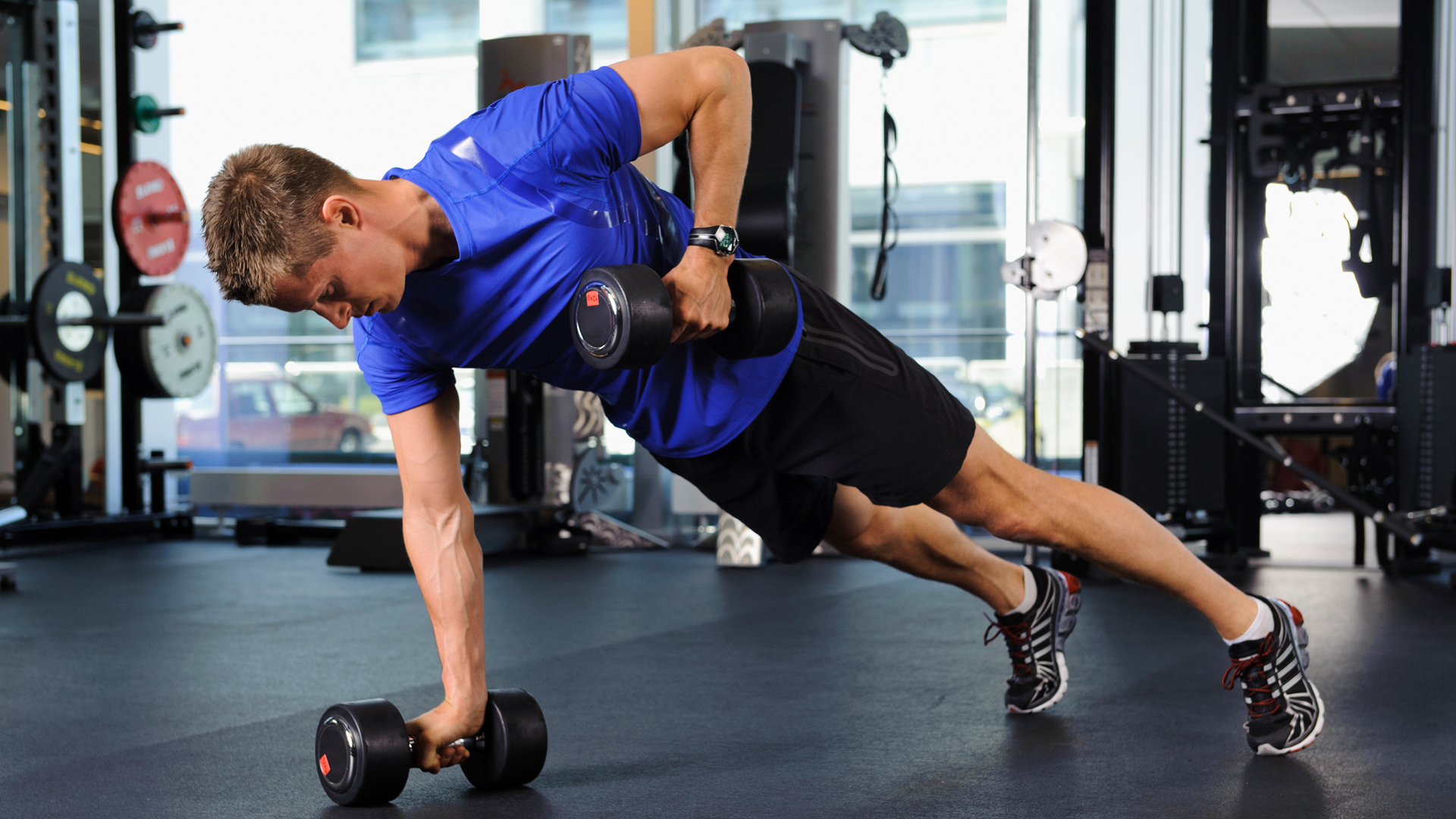
Performing a push-up by holding onto the handles of hexagonal dumbbells allows you to go deeper during the lowering phase of the push-up. This can help strengthen the chest and maximize the effectiveness of the exercise.
- Grab onto the handles of two hexagonal dumbbells, and plant them on the ground slightly wider than shoulder-width apart with your palms facing one another.
- Your feet should be flat on the floor with your toes curled under, contacting the ground behind you. Your elbows should line up directly underneath your shoulders. Your body should be in a straight line from your head to your feet.
- Bend your elbows and lower your chest to just above the ground, so that you’re sinking lower than you would if your hands were flat on the ground, and then push through your hands to raise your body back up until your elbows are extended but not fully locked out.
- Complete 20 reps using good form.
Detten says that, while it’s important to build strength in the chest through pushing exercises, it’s equally important to focus on shoulder stabilization and back strength with pulling exercises.
Stay connected with us on social media platform for instant update click here to join our Twitter, & Facebook
We are now on Telegram. Click here to join our channel (@TechiUpdate) and stay updated with the latest Technology headlines.
For all the latest For Top Stories News Click Here
